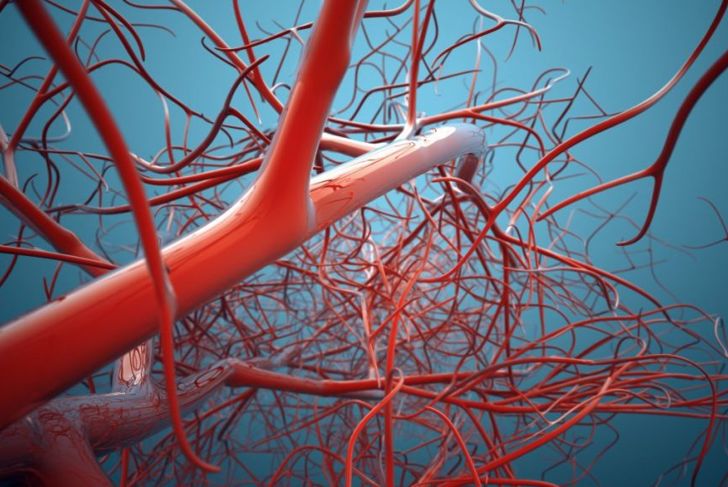There are many people in the world who have severe allergies to a variety of different foods, medications, and substances. When these individuals come into contact with something that they are allergic to, they experience an allergic reaction. One of these reactions, anaphylaxis, may cause their immune system to flood their body with special chemicals, leading to anaphylactic shock. Though many people use the terms anaphylaxis and anaphylactic shock interchangeably, there are important distinctions between the two.
Anaphylaxis
Of the possible allergic reactions, anaphylaxis is among the most dangerous. Not only is it life-threatening, but it also has several classifications. One of these classifications, anaphylactic shock, is unique in its causes and characteristics. Specifically, anaphylactic shock features low blood pressure that originates from vasodilation, which is a widening of the blood vessels. Around .05 to 2% of the world’s population will experience anaphylaxis at some point in their lives.
Allergy Origins
In general, a person develops an allergy to a substance when their immune system creates inaccurate antibodies. For example, most people are not allergic to foods like peanuts. However, some people have peanut allergies because their immune system’s antibodies identified an allergen in peanuts as harmful, even though it is not. As a result, the immune system tries to eliminate this misidentified substance, often to the detriment of the rest of the body.
Symptoms
Most cases of anaphylaxis begin to develop symptoms within minutes of exposure. The common symptoms of anaphylaxis are:
Difficulty breathing
Swelling of the lips, mouth, tongue, or throat
Choking sensations
Rashes and skin irritation
Diarrhea
Congestion
Once anaphylaxis proceeds into anaphylactic shock, more symptoms develop. Most are the result of extremely low blood pressure and poor oxygen flow, such as loss of consciousness, loss of bladder or bowel function, and chest pain.
Similar Conditions
Anaphylactic shock is similar to several other conditions, particularly other types of shock, all of which occur when the organs and tissues stop receiving an adequate amount of oxygen through the blood. Anaphylactic shock specifically results from allergies. Additionally, some of the symptoms of anaphylactic shock are similar to asthma, panic attacks, and syncope. However, in most cases, the rashes and skin irritation of anaphylaxis and anaphylactic shock are unique.
Complications
Without treatment, anaphylactic shock can lead to several serious complications. Anaphylaxis itself is quite dangerous because it can block airways and even stop the heart. Lowering blood pressure and preventing the delivery of oxygenated blood throughout the body can also cause organ failure. This can result in brain damage, kidney failure, cardiogenic shock, and heart attacks. Ultimately, anaphylactic shock is often fatal without treatment.
What to Do
Anyone experiencing anaphylaxis or anaphylactic shock requires emergency medical care. If the reaction is due to an insect sting, remove the stinger if possible, without squeezing the skin. For ideal removal, use a plastic card, like a credit card. Press the card against the skin and slide it towards the stinger. Once the card is under the stinger, flick the card up into it for removal. Once the allergen is gone, place the person in a comfortable position and elevate their legs. Some people may require CPR.
Diagnosis
Most doctors will diagnose anaphylaxis and anaphylactic shock by observing the symptoms. Once the shock is confirmed, the physician will try to determine the allergen and look for several key signs. Involvement of the skin or the mucous membranes in the eyes, ear, nose, mouth, lip, vagina, urethra, or anus is one of the first signs, as the allergen must have entered the person’s system somehow. Respiratory or gastrointestinal issues and low blood pressure are also significant.
Treatment
The doctor will provide a patient in anaphylactic shock with additional oxygen through a ventilator to prevent organ failure. Intravenous medications focus on maintaining fluid levels and relaxing constricting airways. The key medication for anaphylactic shock is the hormone adrenaline or epinephrine. Some doctors also use corticosteroids in the hope that they will reduce the risk of the reaction developing further.
Prevention
There are many ways to avoid anaphylactic shock, with the vast majority being relatively simple. Primarily, avoid any allergens that may cause an allergic reaction. In cases where this isn’t possible, a person may opt to undergo desensitization, a preventative treatment measure that takes place in a safe environment with supervision. Essentially, the technician gradually introduces a person to the substance to which they are allergic. Over time, repeated exposure reduces the severity of the allergic reaction that the person will experience.
Prognosis
With treatment, very few people die of anaphylactic shock. In the United States, only around 0.3% of cases of anaphylaxis are fatal when the person is taken to the hospital. Additionally, additional symptoms after treatment are rare. However, lifestyle changes may be necessary to avoid the allergen that triggered the reaction. Individuals who are aware of their allergies should carry an epinephrine auto-injector for emergencies. Even if a person uses their auto-injector to treat a reaction, they should seek medical attention after self-treatment.

 Home
Home Health
Health Diet & Nutrition
Diet & Nutrition Living Well
Living Well More
More




















